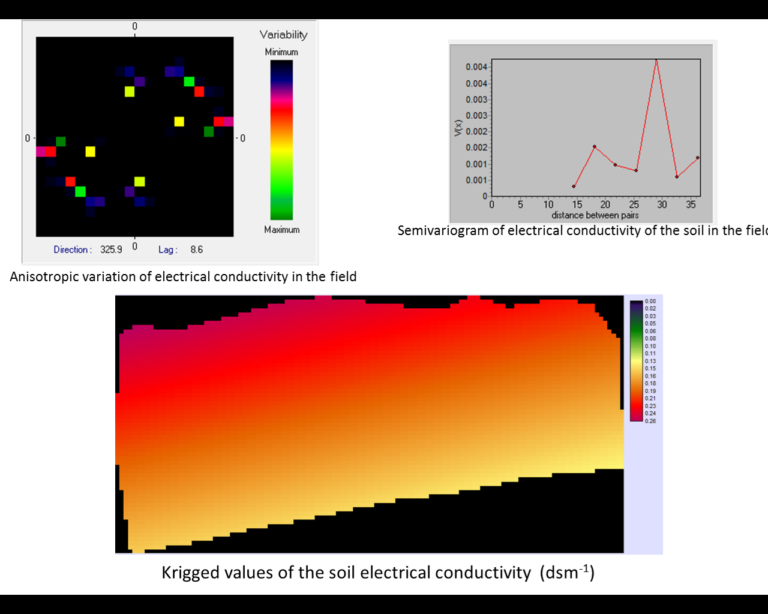Recent Achievements - Agronomy
Organic Farming System in Sugarcane
♣ A ten year study for comparing organic and conventional sugarcane production systems indicated significant yield improvement over the conventional system and also improvement in the activity of the rhizosphere microflora, indicating the sustainability of the organic production systems. A plant crop cane yield of 124 t/ha in the organic plot against 108 t/ha in the conventional plot; a stalk population of 1.72 lakhs /ha in organic plot vs 1.64 lakhs / ha in conventional system; mean CCS% (10 months) of 11.58% in organic plot vs 11.65% in the conventional plot; and CCS% (12 months) of 12.94% in the organic vs 12.47% in the conventional plot were recorded.
♣ Ratoon cane yield in organic production system was 13.4% higher than the conventional production system. Soil organic carbon content and available N in the organic production system were 0.08% and 34 kg/ha higher than the conventional production.
♣ Reduction of plant parasitic nematode population was observed in organic farming and it favoured more of the free living nematode population than in conventional farming system
Drip Irrigation-cum-fertigation system in sugarcane
♣ Drip fertigation to sugarcane saved 41% of irrigation water and gave 9.4% higher cane yield than furrow irrigation. Planting in 5ft paired row at 60/90 cm spacing as well as pits of 1.5m x 1.5m dimension with fertigation up to 120 days gave significantly higher cane yield and sugar yield than other planting methods and fertigation periods. The irrigation water economies under these treatments were 50% and 49% higher than the furrow irrigation method. The juice quality parameters at 10th month and harvest were not significantly influenced by planting method and fertigation period.
Remote sensing and Precision Farming
♣ Recent work initiated in remote sensing in colloboration with NRSA, Hyderabad gave encouraging results in identifying sugarcane areas infected with Yellow Leaf Disease (YLD). The study indicates that it is possible to develop sub-pixel classification model to the highest classification accuracies to demarcate the YLD affected sugarcane fields.
♣In farmers’ field at Amaravathy Sugar mill area, soil sampling for nutrient analyses was conducted on grids to examine the spatial variation in nutrient status. Maps of soil variation generated soil parameter studies will reflect the underlying variation in soil. Results from analyses of soil samples for measurement of nutrient status indicated that whilst there was considerable variation in nutrient levels in field. This demonstrate the potential for addressing variation in critical factors such as pH, EC and soil nutrient at specific locations. In this study is observed that geo-statistical analysis of soil EC (fig ) and pH showed aniostrophic variation. The mean and variance for the pH were 7.5 and 0.11 respectively and the ratoon crop shoot population with in field variation was negatively correlated with soil pH. The soil available N, P & K had showed aniostrophic variation in the field. In the Udumelpet cane division of Amaravathi Sugar mill area farmers fields with in field variation of EC and HR Brix at harvest revealed that they were negatively correlated (r=0.58). Within field variation of soil available K and HR Brix at harvest revealed that they were positively correlated(r=0.71).

Nutrient Studies
Improving sprouting in winter initiated ratoon
♣ Sprouting in winter initiated ratoon is a major problem in the sub-tropics. Experiments were conducted at the Karnal centre to improve sprouting in winter initiated ratoons. Application of fresh sulphitation press mud (SPMC) @ 20 t/ha, combined application of potash @ 60 kg/ha + ZnS04 @ 25kg/ha or ZnSO4 @ 25 kg/ha + SPMC @ 10 t/ha at ratooning resulted in significantly higher number of sprouts at 45 days, and shoots at 75 days and higher yield as compared to control.
Studies on Sulphur Nutrition of Sugarcane
♣ A field experiment was initiated during February 2012 to study the response of sugarcane to S @ 47 ppm through four sources viz., i) elemental S, ii) elemental S with sulphur solubilizer (Thiobacillus thiooxidans), iii) single super phosphate and iv) gypsum along with a control (no S) in RBD with four replications. The crop was harvested during February 2013. Sulphur fertilization significantly increased the cane yield. The mean yield in S treated plots was 80.2 t/ha while in control it was 61.8 t/ha, resulting in an yield improvement of 29.8 per cent (Table 1). The highest yield of 82.7 t/ha was observed in elemental S + Thiobacillus thiooxidans applied plot, which was on par with elemental S alone (80.4 t/ha), SSP (78.5 t/ha) and gypsum (79.3 t/ha). The highest single cane weight was observed in gypsum treated plot (0.95 kg) which was on par with all other S treated plots but significantly higher than control (0.71 kg). The NMC and juice quality parameters at harvest were not significantly influenced by the treatments.
Contact Address
-
ICAR-Sugarcane Breeding Institute
Veerakeralam,
Coimbatore 641007
Tamil Nadu. - Phone: 0422 - 2472621
- Email: director.sbi@icar.gov.in
- GST Number 33AAAAD2962K2ZT
Our Visitor Count







